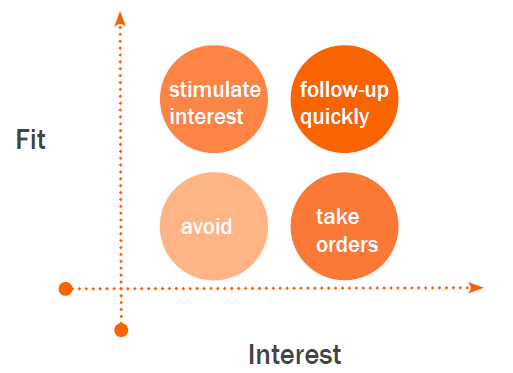A Marketing Qualified Lead, or MQL, is someone that has essentially shown a deeper interest and engagement in your offerings, but isn’t yet ready to be considered an opportunity by Sales. On the other hand, a Sales Qualified Lead, or SQL, is a contact who is at a stage where they are ready to be followed up with directly by Sales.
So how do you figure out what defines each of these lead types in the lifecycle of your funnel? Here are key considerations to keep in mind.
1. Fully Define MQLs vs SQLs
The lead qualification process will be different for every business, thus it will require a unique definition for these stages. The key is that this definition should reflect a combination of actions and behaviours that a lead is a solid fit for your business and also that they’re at a point where they are ready to speak to sales.
Where does the lead fit in terms of your ideal client profile? Are they reflective of your buyer personas? What are their current interest levels? For example, have they filled out an educational awareness stage offer that is answering one of their pain points? Or are they a repeat visitor who has also attended a webinar and looked at additional articles, offers and your website’s pricing pages? Specify fit and interest levels of the lead based on data, and from there sales and marketing will be able to better understand the differences.

On the other hand, for a Sales Qualified Lead, the person has likely already requested a Demo, or reached out to be contacted. They already have a budget to make a decision to solve a pain point, and are ready and willing to speak to someone from the company.
2. Ensure Alignment Between Marketing & Sales
As you reach agreement on these definitions, make sure that the Sales & Marketing teams are in alignment. Have you documented the difference between an MQL vs SQL in explicit detail? Have you determined the hand-off point so everyone can easily understand when this will happen?
What is the process to continue nurturing leads through the funnel once a lead has become a MQL or a SQL?
When on the same page, with unified goals and expectations, the team can come together to hold each other accountable and reach the company’s revenue-generating goals.
3. Implement Lead Scoring
Once in alignment over time and as more and more data is captured, the company will be able to build up and refine a Lead Scoring process for any leads as they continue to make their way through the buyer’s journey. Although this is a topic all on it’s own, the basics of it include reviewing and understanding:
- Behavioural History of Contacts
- Patterns of the likelihood for a lead to close
- Close rates for each type of activity a contact takes, or lead source (ie. those who download a particular Offer, vs requesting a Demo, vs attending a Webinar.
- And overall close rates for Marketing campaign or activities as a whole
From there, you can then figure out a good basis of what score to give different activities in your Lead Scoring system.
4. Optimize Stages of the Sales Funnel
Once setup, continue to analyze your process and the resulting data to optimize each stage of the sales funnel over time. Some important metrics to consider will be:
- Visitor-to-Lead Conversion Rate
- Lead-to-MQL Conversion Rate
- % Sales Accepted Leads
- MQL-to-Opportunity Conversion Rate
- Opportunity-to-Customer Conversion Rate
- Lead-to-Customer Conversion Rate
- Sales Cycle Length
- Average Cost Per Sale
Look at your metrics regularly so you can understand if there is any stage that has issues and needs to be fixed to keep your lead generation efforts efficient.
5. Create the Handoff Process
 Once a Lead hits a particular score or is ready to be handed off to sales as a SQL, setup a process that makes this handover as efficient and automated as possible. For those that aren’t yet, continue to nurture those MQLs until they also reach a level where they can undergo this handoff, preferably via various marketing automation programs to make the process more efficient.
Once a Lead hits a particular score or is ready to be handed off to sales as a SQL, setup a process that makes this handover as efficient and automated as possible. For those that aren’t yet, continue to nurture those MQLs until they also reach a level where they can undergo this handoff, preferably via various marketing automation programs to make the process more efficient.
Summary
To summarize, when Determining the Stages of your Sales Funnel (MQLs vs SQLs), key considerations include:
- Fully Define MQLs vs SQLs
- Ensure Alignment Between Marketing & Sales
- Implement Lead Scoring
- Optimize Stages of the Sales Funnel
- Create the Handoff Process
Now that you understand more about the MQL vs SQL definition process, please check out our recent blog posts covering more useful Inbound Marketing tips.
If you liked this video, subscribe to the Umami Marketing YouTube Channel and the monthly Digital Marketing Postcard. I’ll be back again in March to answer more of your questions. See you next month!


